Gallery: Jaw-Dropping Images of Life Under the Sea
Graceful ballet
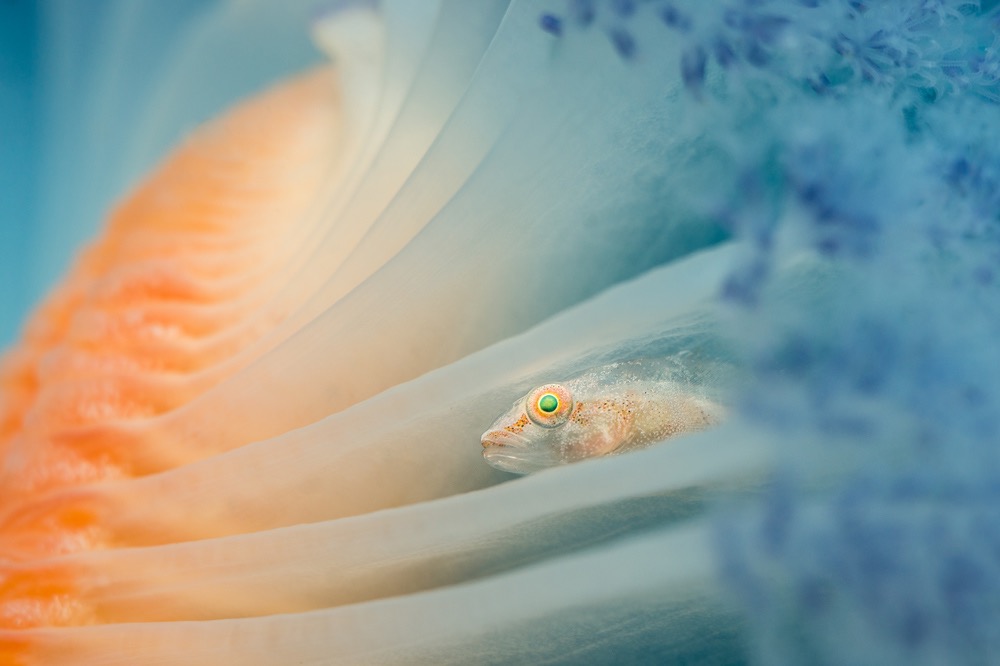
Resembling old-fashioned quill pens, these marine creatures, called sea pens, are composed of a colony of organisms, shown here in a sea pen forest off Mozambique.
"One of my favorite subjects has been the blue sea pen, which hosts different shrimps and gobies," photographer Jenny Stromvoll said. "With its flowing lines and beautiful polyps any subject inside this orange and blue sea pen is beautifully offset and lends itself to an artistic composition. Once I learned to dive with sea pens and their inhabitants, I got to know that they are quick to retract into the sand if threatened. Coupled with this, a deep nitrox decompression dive adds to the complexity. My husband found this sea pen on a recent dive and even though he had a camera himself, he was kind enough to give me an opportunity to take some photos."
Big Red

Photographer Guglielmo Cicerchia snagged a runner-up spot in the contest's Portrait category for this seemingly whimsical, yet dark, shot of a scorpionfish caught up in a fishing net. "During the dive, I found a fishing net in which many fish were trapped still alive. They were struggling to get free. Using a slow shutter speed and zooming during the exposure, I wanted to emphasize the attempt to break free from the fishing net," Cicerchia said.
And the judges were sold: "Portraits don't have to be cute or quirky. This one tugs the heartstrings, as the scorpionfish strains against the net. The long exposure and zoom really adds to the drama of the scene," judge Alex Mustard said.
I've got my eye on you!
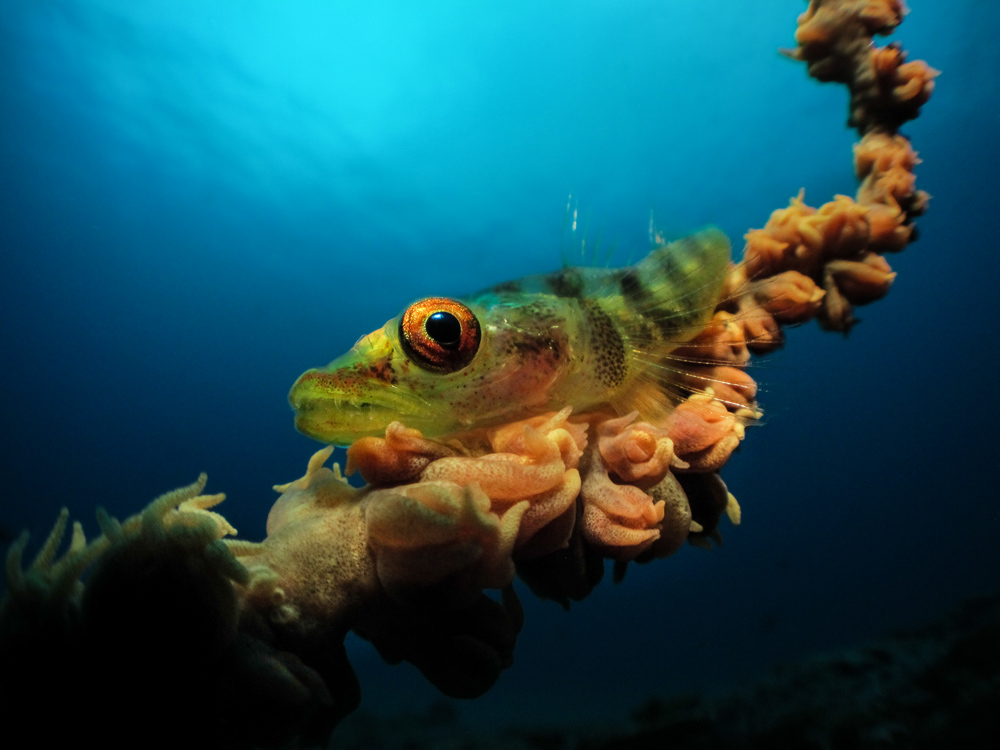
The goby fish seems to be looking right at the camera in this image by Jenny Stromvoll. The photo, captured off Mozambique, was the winner in the Compact category.
"I have shot many whip gobies, but this particular shot was taken with the Inon compact bug-eye lens which added a lot of character to the goby's eye," Stromvoll said. "The trick was to get close enough without the goby moving away. I was fortunate enough to find a very forgiving goby who allowed me into his private space. I knew I had to get down low and shoot up to include the surface of the water. I shot this scene many times before getting the image I was after."
Hyppocampus guttulatus double exposure
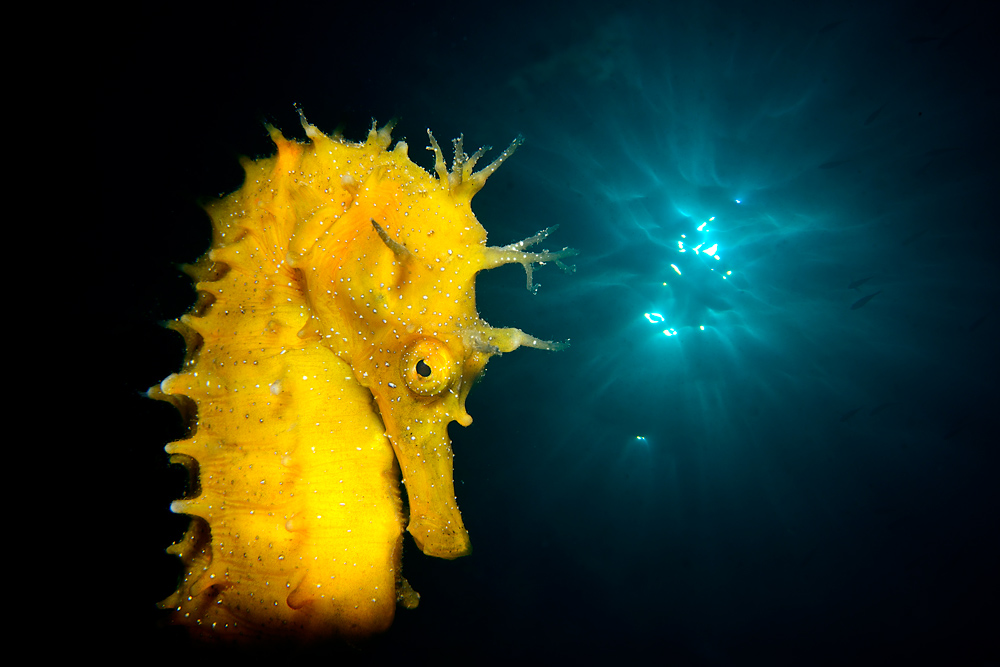
"I tried photographing this seahorse for several months because I wanted to do exactly this type of photography with double exposure made directly underwater without changing the lens and performing two consecutive shots," photographer Adriano Morettin said. "When at last I have found him, I thought that this was the chance of a lifetime, and I did not have let slip out a series of shots that I consider among the best I've done in my long career as an underwater photographer." Morettin captured the image in t he Gulf of Rijeka, Northern Adriatic Sea, off of Croatia.
Get the world’s most fascinating discoveries delivered straight to your inbox.
Hypnotic

Dragos Dumitrescu took home a third place in the Portrait category for this underwater photograph of a pygmy seahorse off Indonesia at a place called Lembeh, Angel's Window.
"Pygmy seahorses are some of the most shy beings I've ever met. The strobes and strong light are not to their liking and most of the time they just turn away. My goal was to use as [little] light as possible, so I've built my own snoot in order to accomplish that," Dumitrescu said. "It creates a 'needle' of light. Not bothered by flashes or torches, this pygmy looked straight into the camera, offering me one of the most rewarding hypnotic portraits I have ever shot."
Kiss me!

Wow, look at those lips! Apparently, dusty groupers (Epinephelus marginatus) like this one can grow to impressive sizes at the El Hierro Island marine reserve in the Canary Islands. "It is interesting that these large specimens have grown accustomed to divers and, sometimes, they let photographers get close, or very close, like in this picture (other times they just ignore all divers)," photographer David Barrio said. "It is a pleasure just being able to dive with these giants and it is even better when they collaborate and stand looking at their reflection on the dome port for some minutes, letting the photographer experiment with light and composition."
Barrio got a "Highly Commended" award in the Portrait category for this shot.
Lophiodes fimbriatus
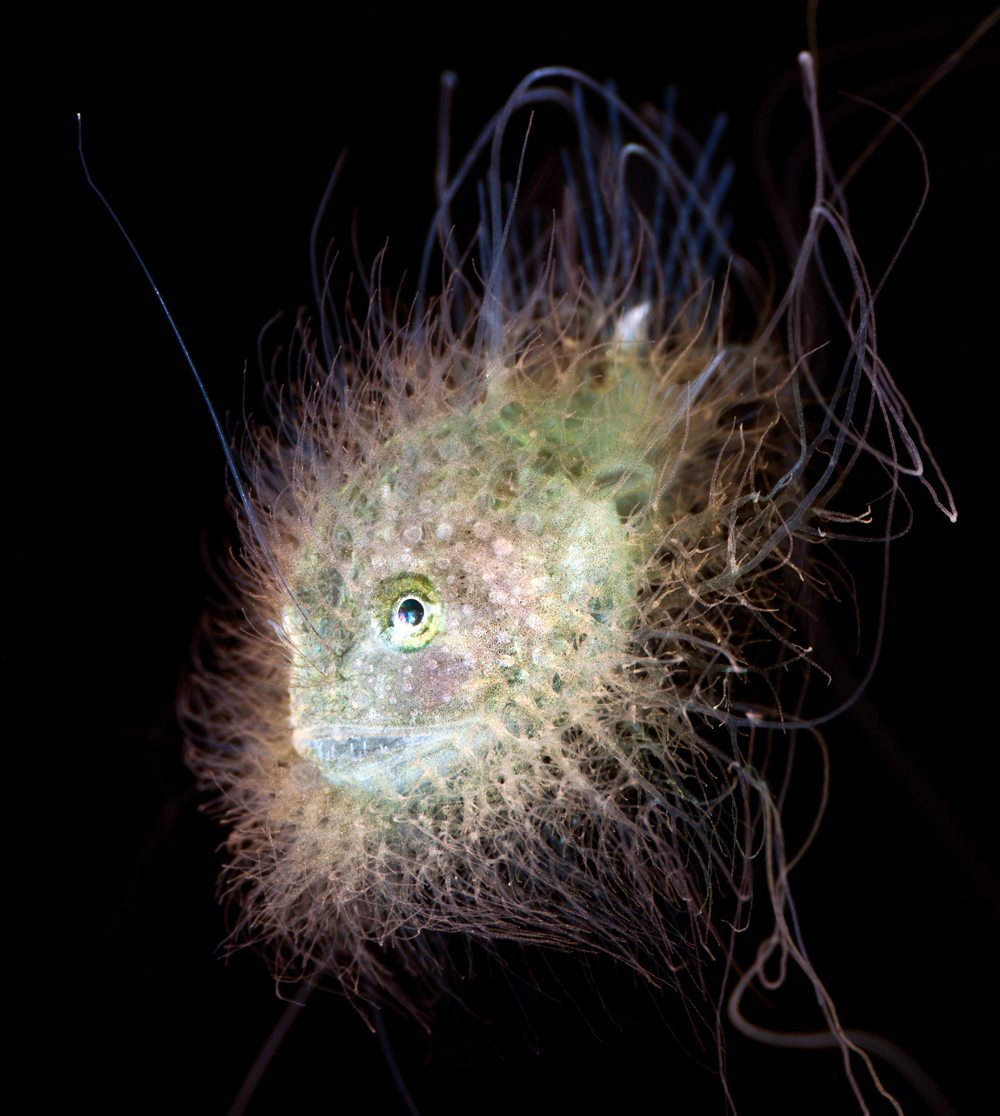
"Blackwater diving, defined as drifting through the open ocean at night over thousands of feet of water, is all about seeing life that you have never witnessed before," said photographer Jeff Milisen. "One night, my buddy pointed out what looked like an egg-yolk jelly, which aren't commonly found in the shallows around Hawaii. But as I looked closer, fins and eyes started to appear and I realized this wasn't a jelly at all, but an anglerfish!" The tiny fish, just an inch (3 cm) long, had tendrils twice that length flowing out from its body, making the fish appear like a stinging, inedible jelly.
Here's what judge Alex Mustard had to say about the image: "What a fantastic character, it is hard to imagine a fish so bizarre can really exist."
Hanging Around
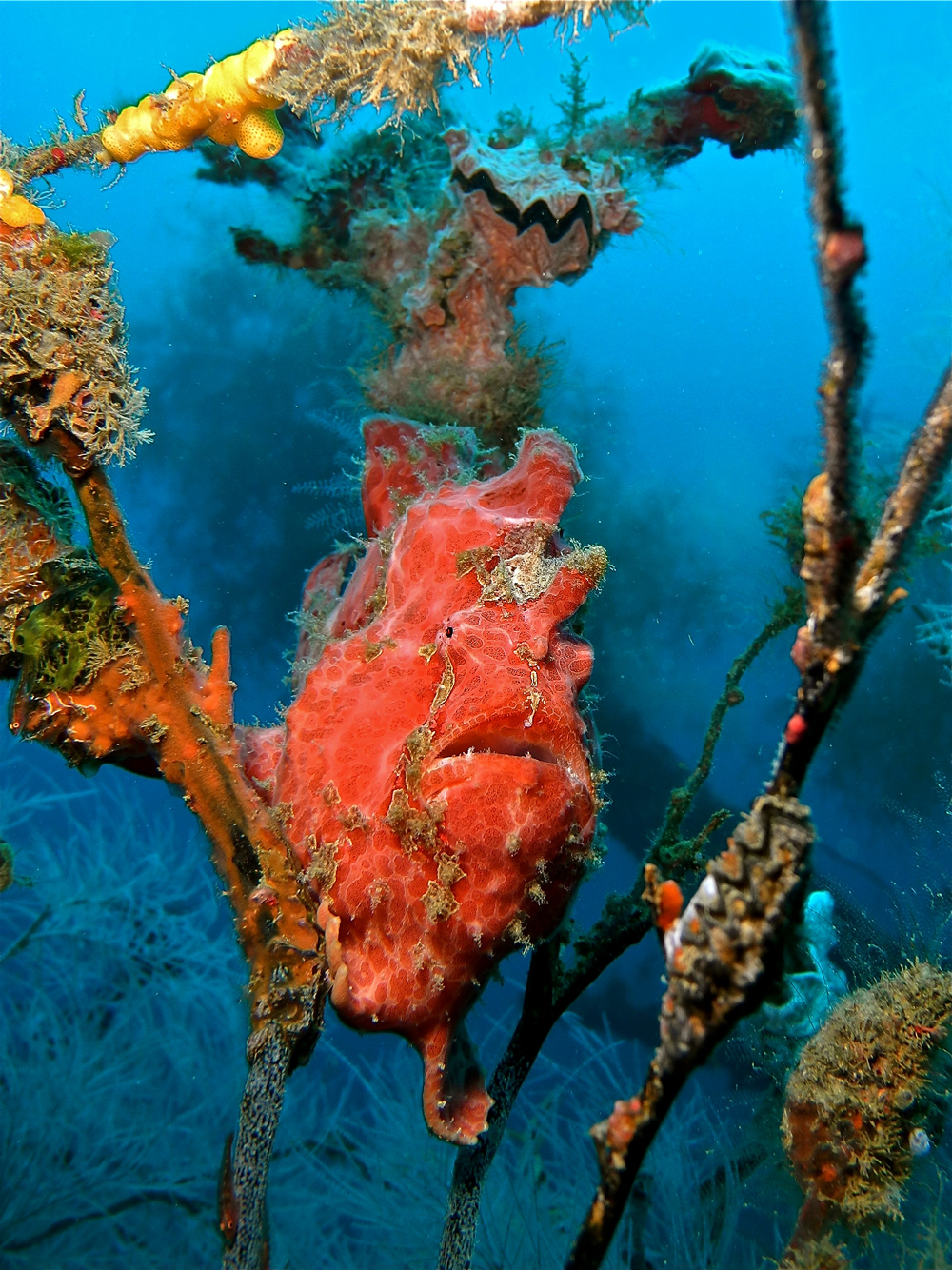
"Gili Raja Wreck is only for experienced divers," said photographer Alexander Franz, who captured this gloomy underwater image off Indonesia. "The pink shining frogfish, hanging in the ropes immediately caught my attention — but when diving with guests I usually don't bring my camera. Impatient, I waited for the decompression time and the surface interval to end, I grabbed my camera and my buddy and I went down again and luckily found the frogfish, still hanging in the same position," Franz said.
Hello World!
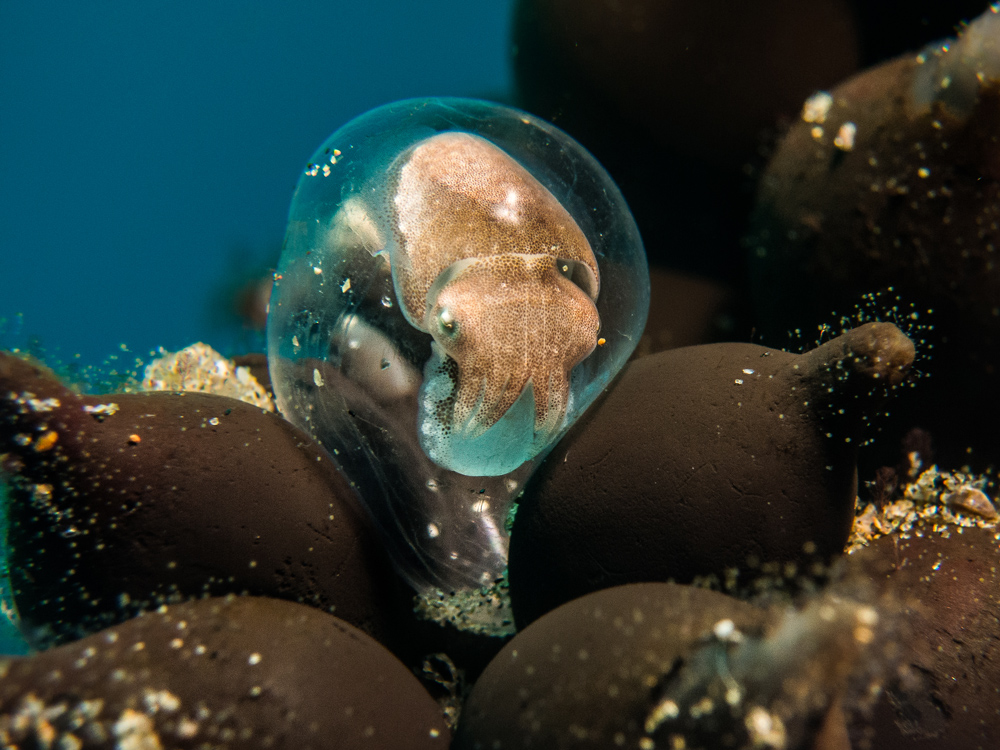
"I found this cluster of Cuttlefish eggs on a reef called Doodles in Ponta do Ouro," said Jenny Stromvoll, referring to a shot she took off Mozambique. "All the eggs looked dark to start with, however, as I looked closer, I noticed one slightly more opaque than the rest. This one was getting ready to hatch! In order to ready himself for defensive maneuvers in the outside world, he absorbed the last drops of ink which his mother had infused into the egg sac. This is when I pressed the shutter button. Moments later the tiny creature set off to start his new life in the big blue." Stromvoll won a "Commended" award in the Compact category.
Purple shelter

"It was the last dive of our holiday and I knew that this amphipod was living in the purple tunicates, which were very common there," said photographer Simon Staiger, who was taking underwater photos off Sulawesi. "So I decided to dedicate this dive to this little critter. After a while I found a tunicate with its inhabitant. It was fascinating to see this tiny creature, hiding in his beautiful purple home, almost only visible threw the viewfinder. To capture this image, I adjusted the lens on its minimum focus distance to achieve the largest magnification and aimed the strobes with full power from either side of the tunica to proper light the the small guy inside its shelter."
Jeanna Bryner is managing editor of Scientific American. Previously she was editor in chief of Live Science and, prior to that, an editor at Scholastic's Science World magazine. Bryner has an English degree from Salisbury University, a master's degree in biogeochemistry and environmental sciences from the University of Maryland and a graduate science journalism degree from New York University. She has worked as a biologist in Florida, where she monitored wetlands and did field surveys for endangered species, including the gorgeous Florida Scrub Jay. She also received an ocean sciences journalism fellowship from the Woods Hole Oceanographic Institution. She is a firm believer that science is for everyone and that just about everything can be viewed through the lens of science.


